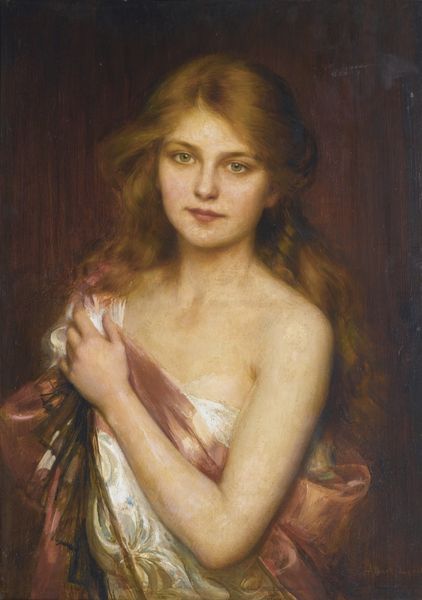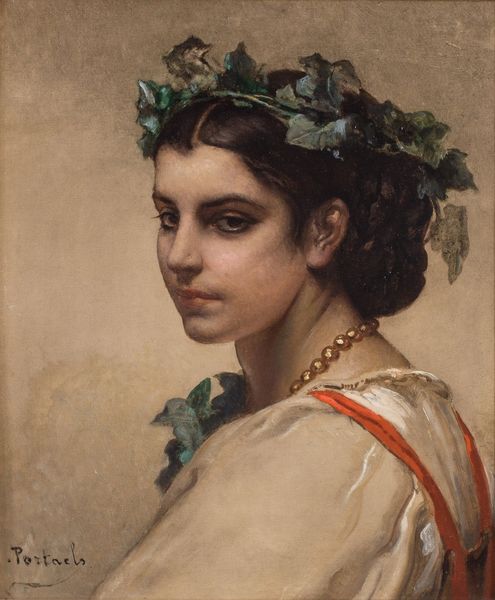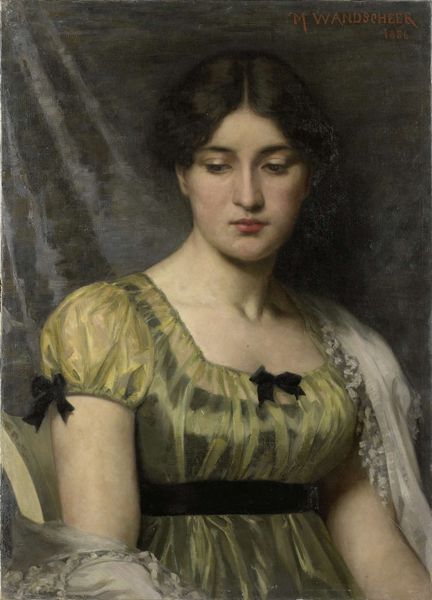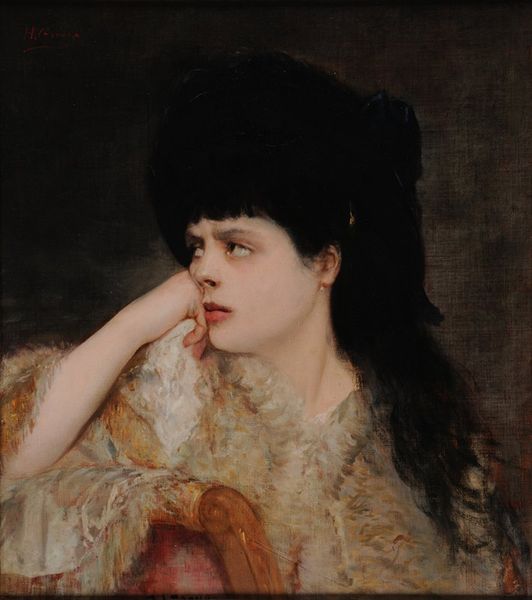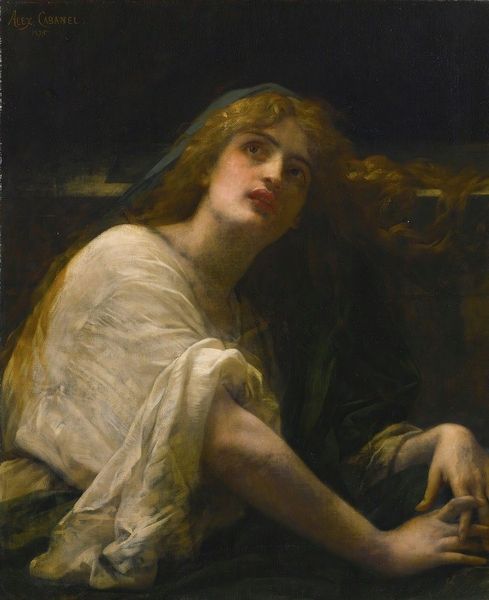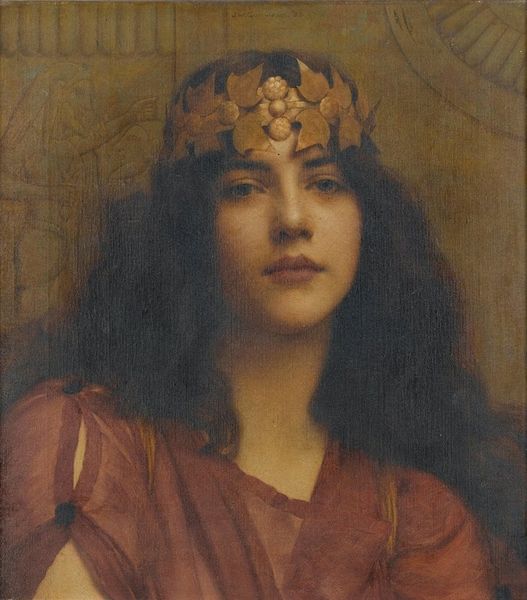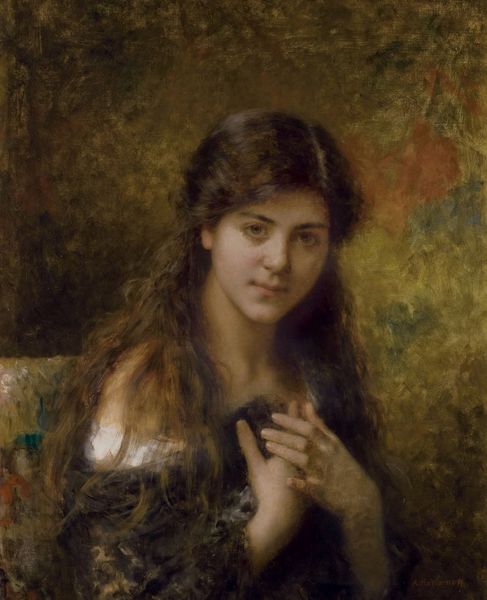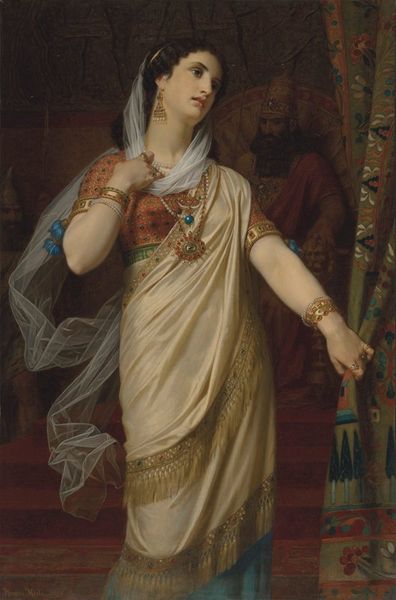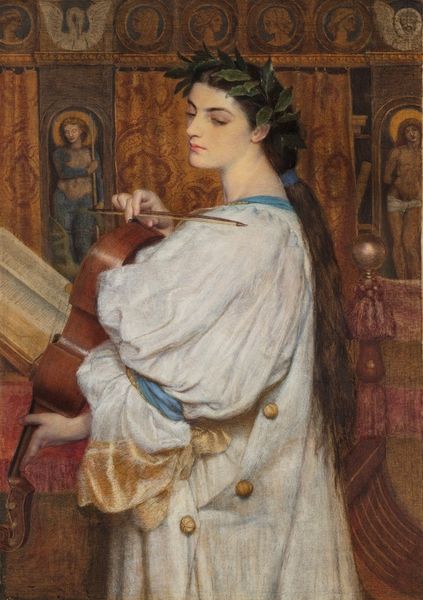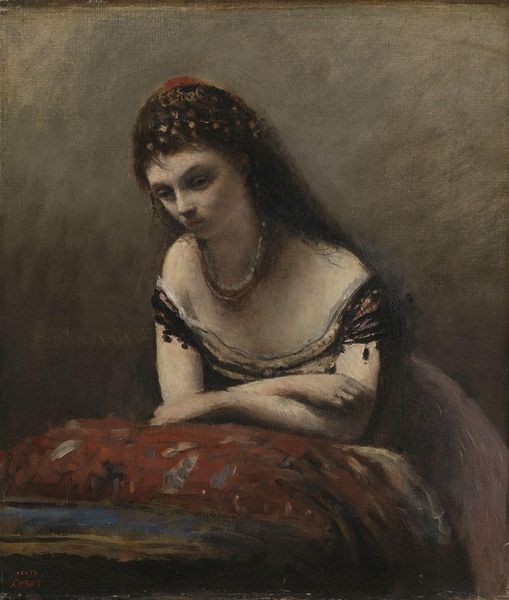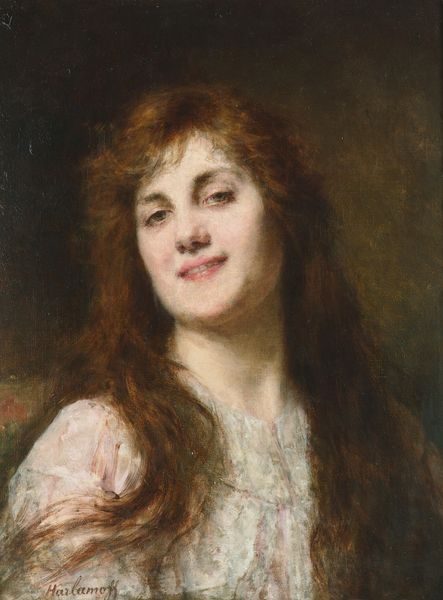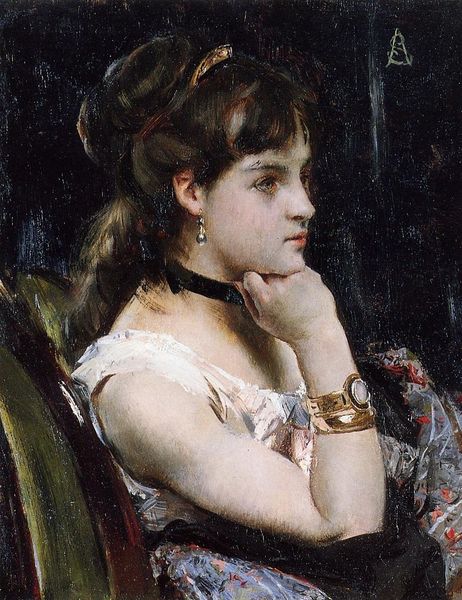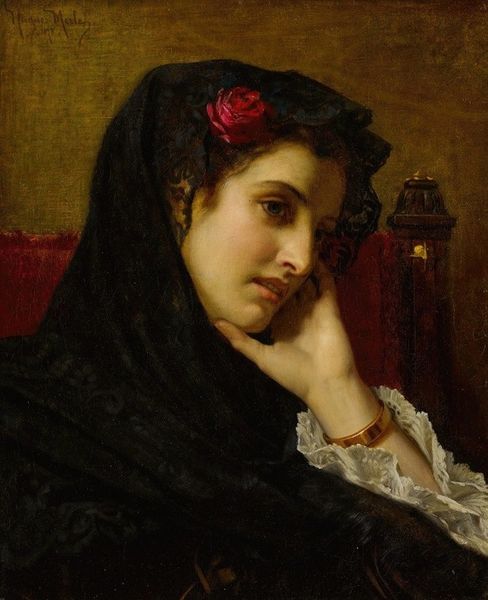
Dimensions: 73.5 x 59 cm
Copyright: Public domain
Editor: Here we have Alexandre Cabanel's 1871 painting, "Desdemona," rendered in oil paint. The palpable sadness is the first thing that struck me, along with how delicately her emotions are captured. What do you see in this piece, especially considering its historical context? Curator: Indeed, the vulnerability is arresting. Beyond the surface, "Desdemona" offers a poignant entry point into examining the representation of women and power in art. Cabanel, situated within the Academic tradition, portrays Desdemona moments before her murder in Shakespeare's Othello. Think about it: a woman, silenced, her fate predetermined by male rage and jealousy. Editor: That’s such a tragic character study. Is there a subtle political critique of its time, especially considering women's roles? Curator: Absolutely. Although Cabanel’s style aligns with Academic conventions which favored established social structures, we can still ask probing questions: is this an aestheticization of female suffering, or a commentary on patriarchal violence? Look at her upward gaze. Is it hope, despair, or both? In 1871, during the rise of feminist movements, such depictions resonated with debates about female agency and societal constraints. Her race matters here, too, considering Shakespeare's original intent to showcase a mixed marriage at a time when racial prejudices were at its height. Editor: It really highlights the conflicting interpretations that exist within even classical works. Curator: Precisely. The image functions on multiple levels – a beautiful painting and a starting point to consider social structures that perpetuate inequalities. Considering the limited agency women historically possessed and the racial climate then makes one examine the work even deeper. Editor: This definitely encourages me to view art as more than just visual, and delve into historical implications and how societal perceptions of gender and race played a big part. Curator: Exactly! It's about seeing art as a product of its time, deeply interwoven with the social, political, and cultural threads that shape it. The emotional power is undeniable but its strength stems from that interplay between historical context and individual expression.
Comments
No comments
Be the first to comment and join the conversation on the ultimate creative platform.
